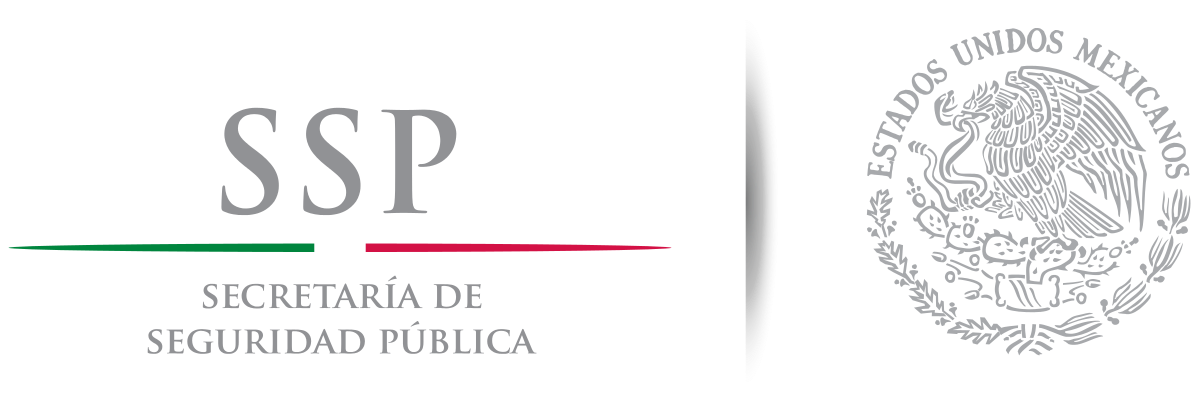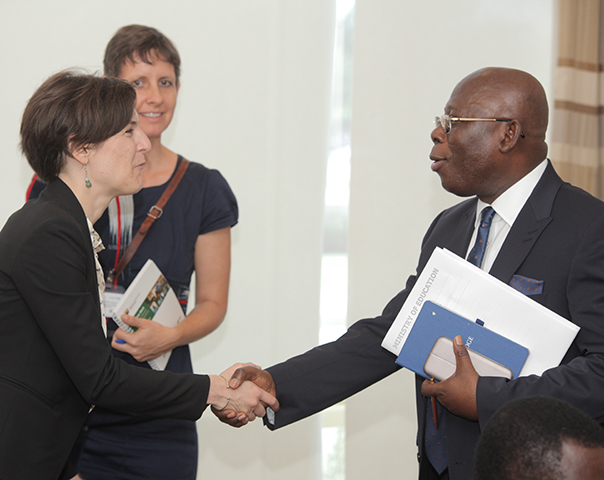Read about this intervention in a VoxDev article.
The Challenge
Citizen trust in public safety and in the police can have important implications for the quality of policing, as well as for trust in the state in general. Widespread feelings of insecurity among citizens are associated with a decreased perception of police legitimacy, which can make it difficult for the police force to recruit top talent, secure funding, and convey information to the public.1 Mistrust in police and perceptions of insecurity may also reduce citizens’ participation in public safety efforts, which can limit the police force’s understanding of citizens’ needs and reduce police officers’ motivation.2
It has long been established that the most reliable predictor of citizen trust in the police is the extent to which police officers behave according to the principles of Procedural Justice, a framework that originally gained prominence in U.S. criminology in the 1990s.3Procedural justice specifies four principles that determine whether citizens will perceive their authorities as legitimate: (1) voice (the opportunity to be heard prior to police decisions, to provide “their side of the story”); (2) police officer neutrality (the assurance that police officer behavior or decisions are in no way driven by physical appearance, gender, preferences, or other individual characteristics); (3) dignity and respect (the perception that police officers treat them as citizens with full rights and with a presumption of innocence); and (4) trustworthiness (clarity from the police about why they are doing what they are doing and what a citizen can expect next).4
Crime, violence, and a weak rule of law are among some of Latin America’s most pressing issues. Mexico in particular was ranked 99 out of 102 countries in terms of Order and Security in the 2017-2018 World Justice Project Rule of Law Index, and is the worst performer both within Latin America and among countries with similar income levels.5 Insecurity is also consistently listed as the top citizen concern, far above poverty, unemployment or public health.6
Mexico City is the country’s largest city, with more than 9 million inhabitants. Although it has one of the lowest homicide rates in the country, and has a largely effective police force, citizen perception of public safety and the reliability of the police force is consistently low. For instance, in 2017, 85 percent of Mexico City’s inhabitants reported feeling unsafe and only 37 percent reported having confidence in the police.7
If the above four police officer behaviors are systematically associated with more positive interactions with citizens, then police forces should benefit if they were to institutionalize such behaviors through training programs, incentive and evaluation systems, internal communication methods, and other organizational processes. This requires, however, clarity on which types of interventions can truly improve outcomes and how.
The Evaluation
Researchers worked with the Secretariat of Public Security of Mexico City to conduct a randomized evaluation of the impact of a procedural justice training on police officers’ comprehension and internalization of the procedural justice framework, as well as on changes in their behavior.
Working together, the Secretariat and the research team adapted the procedural justice model to the Mexican context and developed a training program (and accompanying manuals) to encourage line officers and commanders to apply the principles of procedural justice to their work. Researchers randomly assigned 60 police sectors of Mexico City to either receive the intervention, or not. In total, 966 line officers and their commanders in 30 sectors received the intervention, and 888 line officers in another 30 sectors did not.
Line officers and commanders who received the intervention participated in a nine-hour (twelve hours for commanders) training over three days that were tailored to their roles. The training sessions, which contained a maximum of 20 officers, focused on strengthening the capacities of police officers to apply procedural justice principles when interacting with citizens in a variety of different situations. The training also dedicated time to reflect on the several conditioning elements that could negatively influence police-citizen interactions, such as stereotypes, prejudices, social context, and historical cases of police misconduct; and that despite citizens occasionally treat police officers unfairly, it is the responsibility of the police, and of its officers, to restore citizens' trust. Following the training, line officers and commanders received reminders in the form of a pamphlet and card with a summary of the information covered in the training, acknowledgment of participation in the workshop, and five reminders of key training concepts via SMS.
The study measured line officers’ perceptions of the importance of procedural justice, whether they internalized procedural justice concepts, and their actual behavioral change in the streets. To evaluate the impact of the intervention on perceptions, researchers conducted surveys with participants at the beginning and end of the intervention, utilizing a structured questionnaire together with in-depth interviews with photo prompts (called “photo journal”). To evaluate the impacts on behavior, researchers conducted a “mystery shopper” study that sent actors to simulate citizen interactions with line officers while wearing hidden cameras and microphones in both treatment and control police sectors. Initial surveys were conducted two to four weeks before the training. Follow-up surveys were conducted on average three months after the training.
Results
Overall, procedural justice training had significant impacts on the perceptions and behavior of individual line officers. Across all measures, researchers estimate that the training produced effects large enough to bring an officer whose performance regarding procedural justice began in the bottom quartile of the distribution to the median.8
Perceptions: On average, officers who received the procedural justice training perceived greater importance for the four procedural justice principles—voice, neutrality, respect, and trustworthiness—than their counterparts in the comparison group. To estimate the overall impact of the training on officers’ perceptions, the research team measured officers’ perceptions of each principle and compiled them into an index, on which trained officers scored 4.8 percent higher than untrained ones.
Officers who began with more positive views about how citizens perceived their work benefited more from the training, suggesting the importance of empathy and understanding between police officers and citizens. Additionally, and taking advantage of a quasi-random variation in the timing of the training between line officers and commanders, the researchers show that the training was more effective for officers whose managers were trained as well.
Behavior: Three to twelve months after training, “mystery shoppers,” posing as citizens, interacted with 488 line officers—211 untrained officers and 277 trained ones. In these interactions, trained officers performed better than untrained ones, scoring an average of 4.1 percent higher on a procedural justice index as measured by external observers instructed in procedurally just behavior.
As with perceptions, the positive impacts on behavior were larger for officers who at the beginning of the study had more positive views on how citizens perceived them, as well as officers with more pro-social perceptions of their communities generally and those with higher job satisfaction. There were no changes for officers patrolling relatively riskier (as measured by the number of reported crimes) areas than those in areas with lower crime rates.
Policy Impact and Implications
Since 2019, over 1,500 police officers in 28 cities in Mexico have received procedural justice training. In three cities, IPA has also supported a train-the-trainers program, building capacity for police departments to include procedural justice either as a standalone training or as part of their basic training. Procedural justice has also been integrated as a strategy to build citizen trust in Mexico City, as part of the city's homicide prevention program Alto al Fuego, and in Cancún, Chihuahua, Saltillo, San Nicolás, and Morelia as part of their community policing programs.
Sources
1,2. Tyler, Tom. 2003. “Procedural Justice, Legitimacy, and the Effective Rule of Law.” Crime and Justice. 30. 283-357. 10.1086/652233; Tyler, Tom R. 2006. Why People Obey the Law. Princeton: Princeton University Press.
3. https://www.oxfordbibliographies.com/view/document/obo-9780195396607/obo-9780195396607-0241.xm
4. Tyler, Tom. 2014. Legitimacy and Procedural Justice: A New Element of Police Leadership. Washington, DC: Police Executive Research Forum (PERF).. https://www.ncjrs.gov/App/Publications/abstract.aspx?ID=268357
5. World Justice Project. 2018. WJP Rule of Law Index 2017-2018. Washington, DC: World Justice Project. https://worldjusticeproject.org/our-work/wjp-rule-law-index/wjp-rule-law-index-2017%E2%80%932018
6. Encuesta Nacional de Victimización y Percepción de Seguridad (ENVIPE). Instituto Nacional de Geografía y Estadística, 2017. http://www.beta.inegi.org.mx/contenidos/saladeprensa/boletines/2018/EstSegPub/envipe2018_09.pdf
7. Encuesta Nacional de Victimización y Percepción de Seguridad (ENVIPE). Instituto Nacional de Geografía y Estadística, 2017. http://www.beta.inegi.org.mx/contenidos/saladeprensa/boletines/2018/EstSegPub/envipe2018_09.pdf
8. 89 percent of officers assigned to receive the training did so. The results presented are the average effect on those who took up the training.
Implementing Partner












